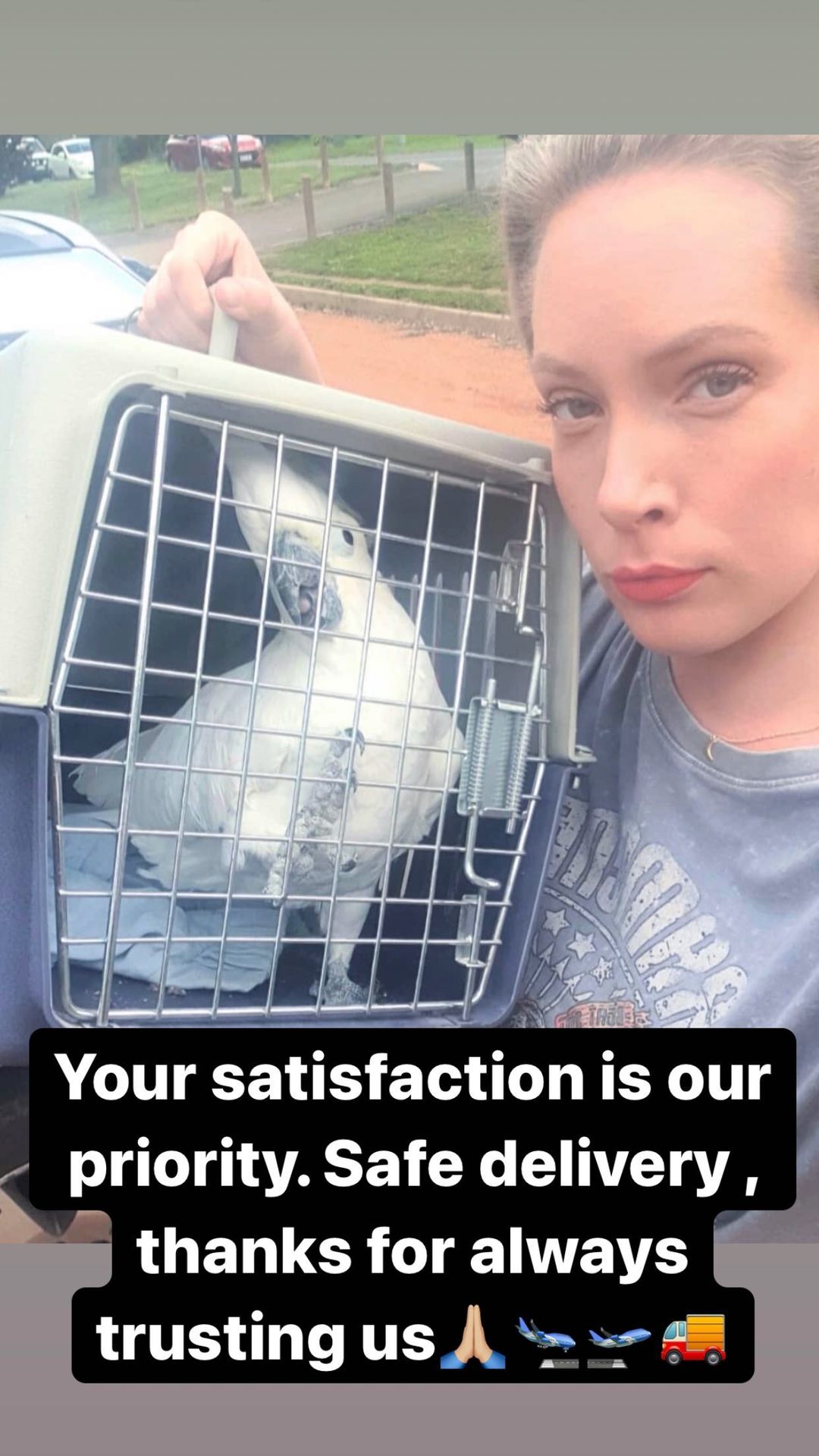Blue-throated macaw for sale
Blue-winged macaw for sale
Blue-winged macaw information;
Genus: Primolius | Species: maracana
Size: 43cm (16.8 in)
Weight: 265g (9.2 oz)
Races including nominate: one
Color Adult:
Both adults: forehead red; crown, nape, and lower cheeks green/blue; red on low back and middle of abdomen; blue tail with red/brown around the base. Bill black. Bare cere and face pale yellow. Eye orange.
Colour Juvenile:
Red forehead paler; red on the abdomen and back tinged with yellow; tail shorter. Eye brown.
Call:
Loud screeching and other raucous calls.
Blue-winged macaws for sale for adults and juveniles are available for sale at macaws farm. Order and get your new best friend
Video Links:
Video 1
More Information:
Avibase
National Geographic Photo Ark
Handbook of the Birds of the World
The Blue Throated Macaw for sale ( Ara Glaucogularis ) is among the most stunning of huge Macaws. It is elegant and more graceful when it moves than the other Macaws. Its color is comparable to the somewhat more spacious Blue and Gold Macaw, with a gorgeous teal blue hue on its upper parts, and gold underneath. However, it’s distinguished by a huge blue throat band that extends to its coverts for the ear, earning it the name Blue-throated. It is also called The Candide Macaw and the Wagler’s Macaw.
The beauty of the Blue-throated Macaw parrot has only been recognized in the aviculture world since the late 1970s. In contrast to the fact that all the other big macaws were found at least 200 years earlier in the 1700 and 1800 centuries, the Blue-throated Macaw was not discovered until 1921. Its habitat is not extensive. It is only found in extremely limited areas, mostly in Bolivia. They are mostly found in the lowlands of dense, humid forests, or secondary forests near the water.
Blue-throated macaws for sale
The blue-throated Macaw for sale is a gentle and loving pet bird however, it is curious and intelligent. As wild bird species, they are thought by their shyness and withdrawn However, when fed with a hand they are very social and chatty. They enjoy chewing on their food and performing Acrobatic tricks. These activities, as well as exploring the world around them with their beaks and tongues are among their favorite activities.
While these Macaws aren’t keen to be handled as much as their close relatives that are the Blue Macaw and the Gold Macaw, they are non-demanding and friendly. They don’t tend to bite and are not loud like many other macaws are. They are not loud or aggressive. Blue Throated Macaw is quite happy to play, especially in the presence of ample chewing materials. These characteristics make them ideal birds for an aviary or pet. They can be kept when there are neighbors nearby.
Blue Throat Macaws are beautiful birds. They have bright blue faces, necks, and back. Their chest is a stunning golden-yellow color. Blue Throats are slightly smaller than Blue and Gold Macaws. Blue Throats are known to have strong personalities, a home that offers time, patience, and commitment would do very well with a Blue Throat. As with all large macaws, a Blue Throat will require a large enclosure, a lot of toys, and a lot of love. Ideally, the minimum cage size for this size bird is 40″x30″x75″ with a 1″bar spacing. At Parrot Stars, we focus on education, nutrition, and conservation. We work very hard to help educate our customers on parrot companionship. Prior to taking a bird home, we will provide information on proper housing, creating a safe environment, diet, behavior, hormones, and much more.
Every hand-fed baby is weaned onto a high-variety diet. They are weaned onto fruits and veggies, a soak and sprout mix we make here in the store, high variety seeds that we also make here in the store, and naturally colored pellets.
Blue-throated macaw, also known as the Caninde macaw, is a macaw endemic to a small area of north-central Bolivia, known as Los Llanos de Moxos. In 2014 this species was designated by law as a natural patrimony of Bolivia, where it is known as Barba Azul, which means ‘blue beard’ in Spanish.
The forehead, crown, neck, wings, and tail are light greenish-blue. The naked face is striped with dark greenish-blue feather lines.
Blue Throat Macaw has a striking plumage that is turquoise blue on the head and back, and the chest, abdomen, thighs, and the underparts of the wings are bright yellows. They have long tails that are orange below and blue on top.
This species has distinctive blue cheeks and throat patches. Males may have a darker patch of blue on the throat.
The large bill is dark grey-black, hooked, and strong enough to crush even larger nuts. The beak also comes in handy when climbing around the trees. The dark grey feet are zygodactylous (with 2 toes pointing forward and 2 toes pointing backward) – an adaptation that helps them grasp securely the branches as they perch or move around in trees.
The eyes are pale yellow with an indistinct greyer ring near the pupil.
The dark grey feet are zygodactylous (with 2 toes pointing forward and 2 toes pointing backward) – an adaptation that helps them grasp securely the branches as they perch or move around in trees.
Immature birds look similar to adults but have a darker throat band, shorter tails, and dark brown or grey irises.

